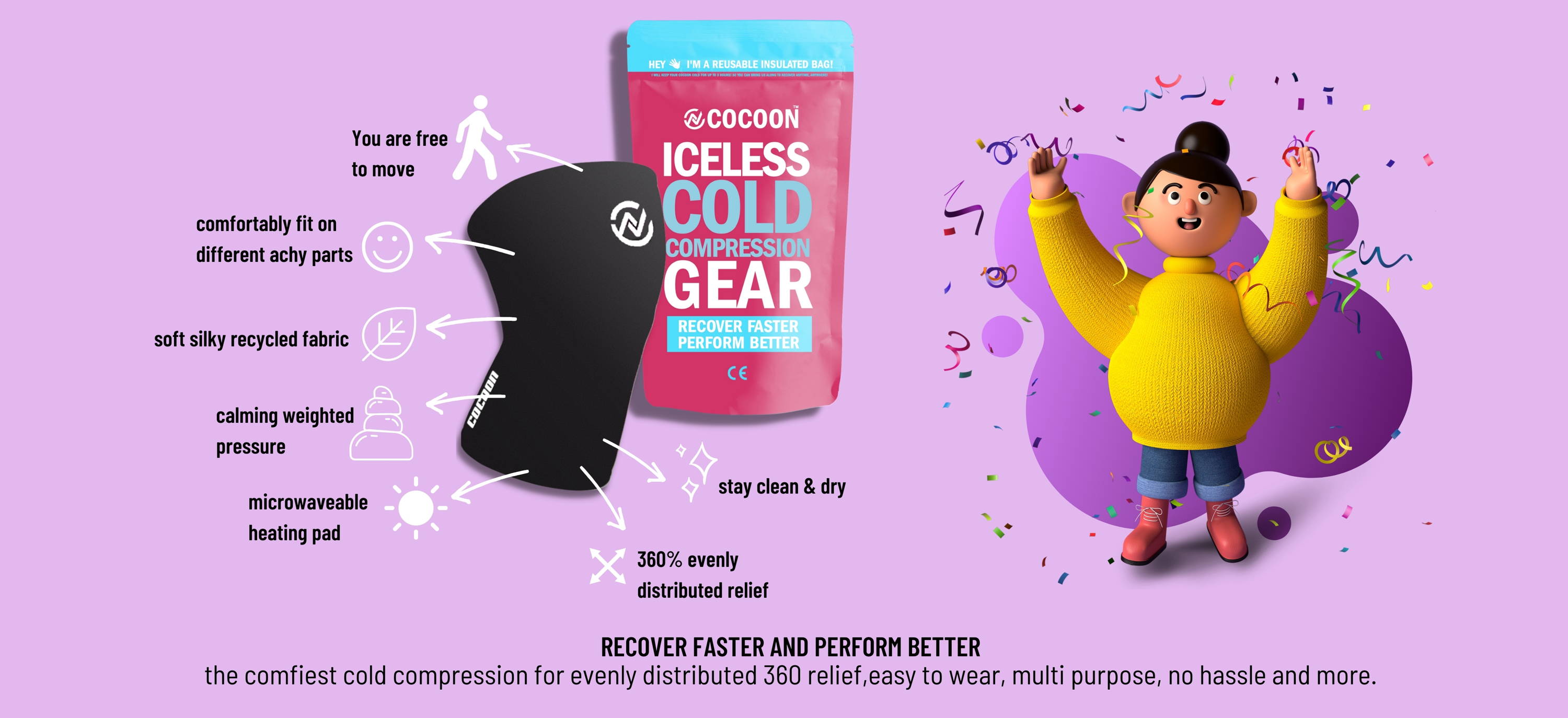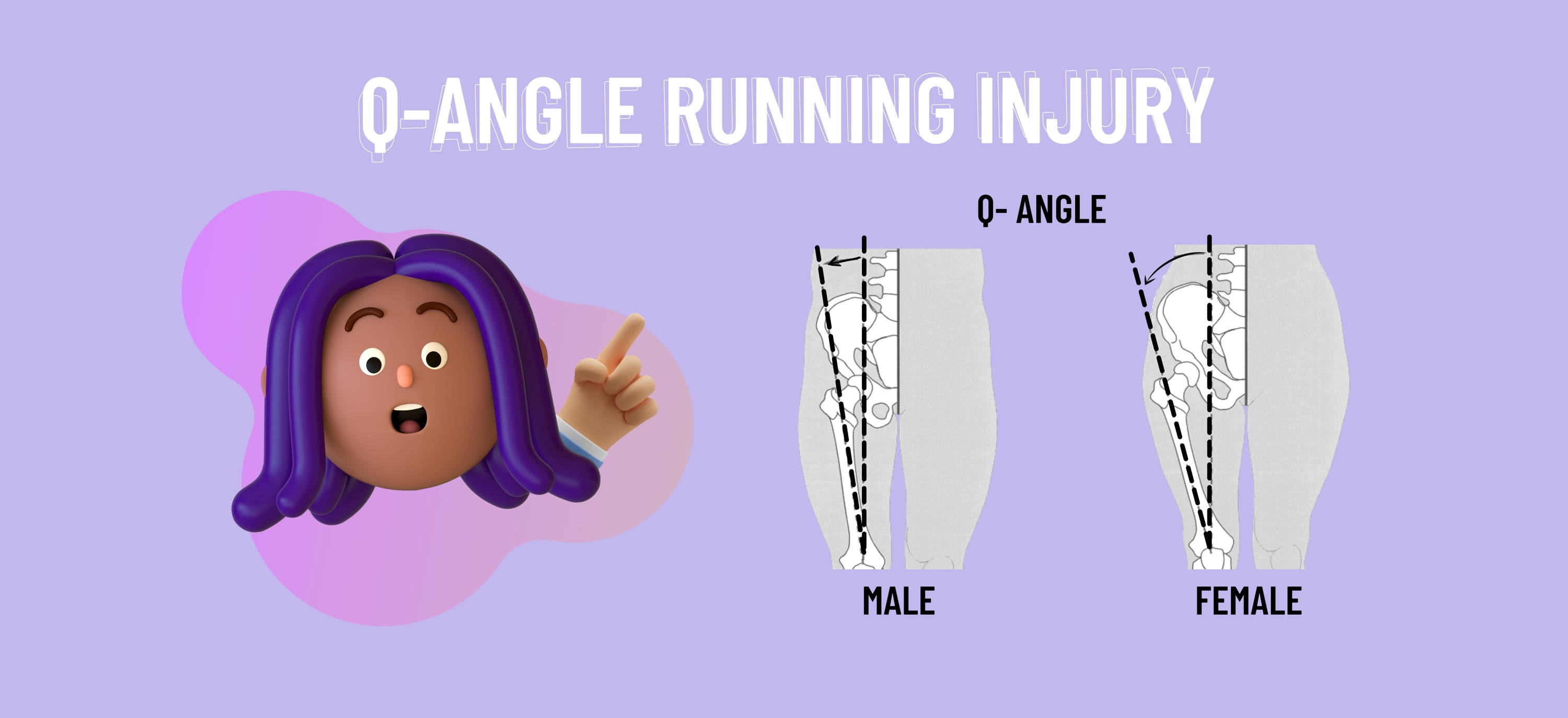
Running a q-angle is a common running injury that can be avoided if you are aware of the factors involved.
The q-angle running injury occurs when the q-angle between the tibia and femur changes due to rotation of one or both lower limbs which causes an abnormal loading on body joints, muscles, ligaments, tendons, and other tissues. Q-angles are measured by comparing the angle of the tibial plateau relative to a vertical line drawn from it to an anterior superior iliac spine (ASIS) landmark on each side.
This article will provide information about q-angles, their significance in runners with hip injuries, prevention strategies for q-angle running injuries as well as how they should be treated once they occur.
WHAT IS A Q-ANGLE RUNNING INJURY?
A higher q-angle may be an indication of a potential running injury. Q angles can vary from less than 10 degrees, which is healthy for runners and considered low risk, to 15 degrees or more in certain individuals where there's been some research that suggests it could lead to malalignment problems with knees when doing activities such as jogging at high speeds due to the increased leverage placed on these joints The Q-angle and a high hip internal rotation angle while jogging are two of the most significant variables that alter running gait.

WHAT IS A NORMAL Q-ANGLE?
The female body has a naturally higher Q angle. This is because of the wider pelvis and more space in between each bone, which allows for greater stability during childbirth as well! High Q angles are also linked with multitracking on one's patella - usually meaning it travels over where you want rather than against its natural position or shape (and possibly causing pain). If measured laying down from 1-3 degrees lower when compared to males at 14° vs 17° respectively; this can lead not only cause increased knee stress but even cartilage damage if left unattended.
FACTORS AFFECTING 'Q' ANGLE:
Q angle is one of the more important factors affecting your running technique. It has been shown to affect many aspects, including femoral anteversion and tibial tubercle position for those who have it in their quiver (or lack thereof). Without enough Q-angled during the stride, the leg contact time will be lost because you are not able to extend fully as far off both sides with every footstep on uneven ground without putting any weight onto them!
THERE ARE FOUR DIFFERENT TYPES OF INJURIES ASSOCIATED WITH HIGH Q-ANGLES IN RUNNERS
Running a high q-angle is not only typical, but it's also avoidable. Four different types of runner's injuries can stem from fast strains and tears in one’s body.
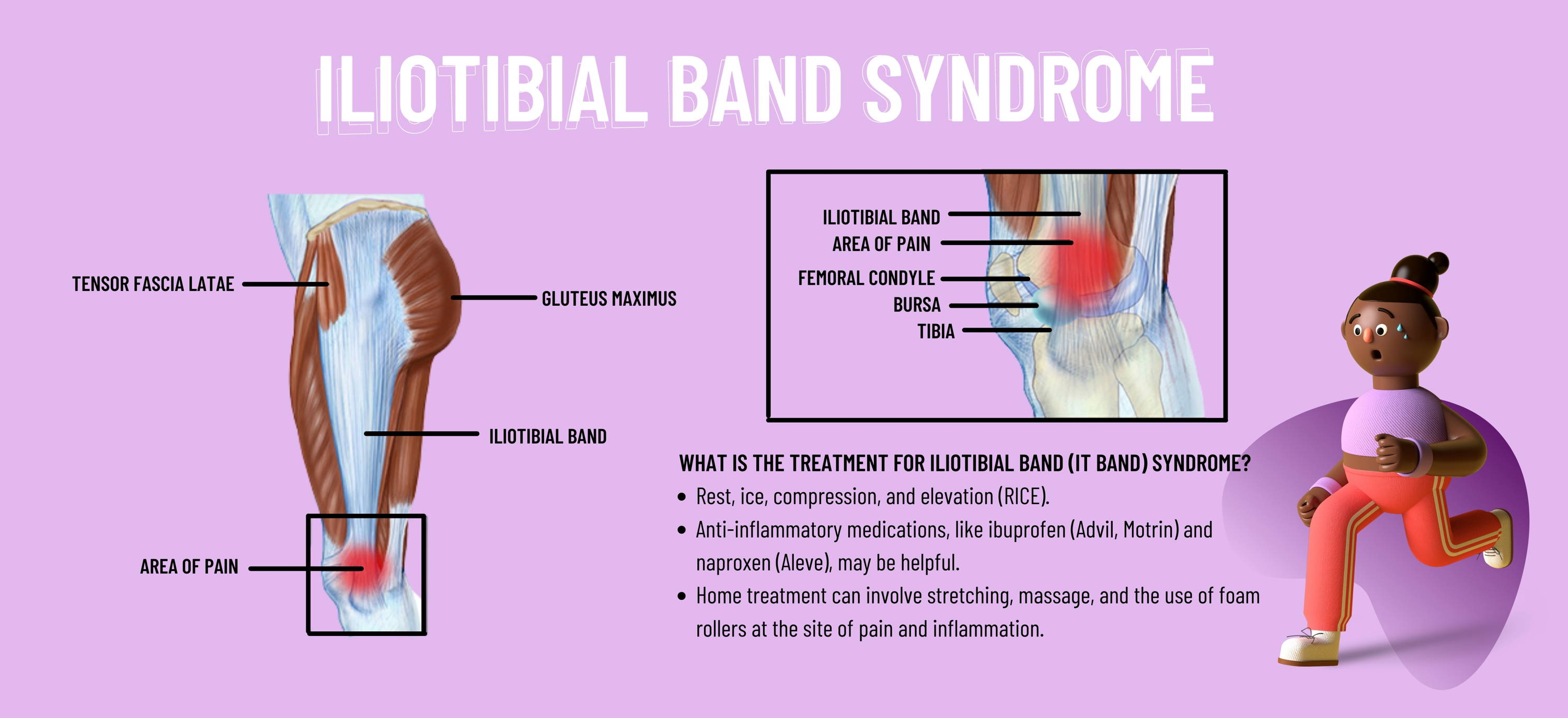
Iliotibial band syndrome
ITBS occurs when excessive irritation causes pain at the outside (or lateral) part of your knee. The iliotibial band, often referred to as "the IT band" can be found running alongside your thigh from the pelvis up through one's groin into the hip area before ending on the outer portion near another joint where they meet leg bones in the middle section just below the kneecap - this piece is called femoral groove.
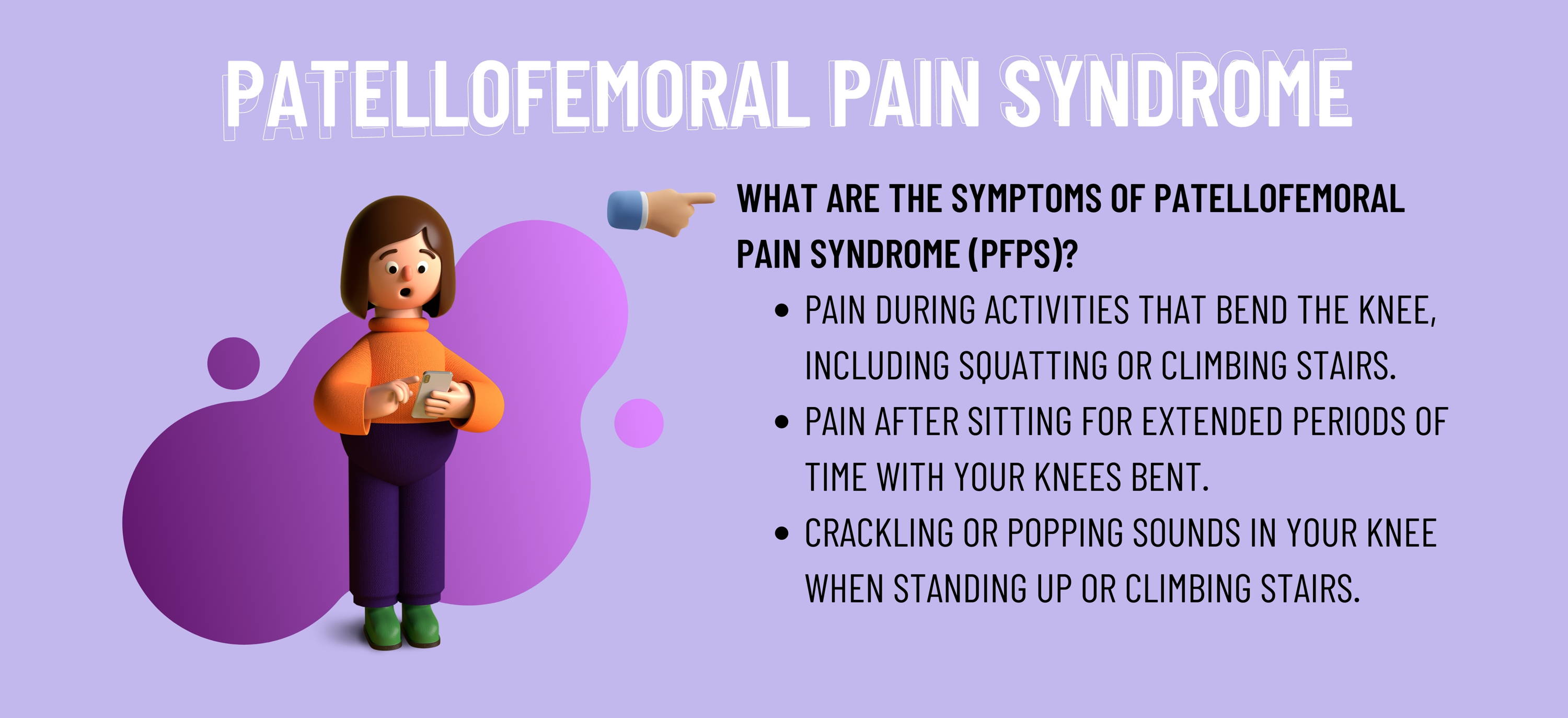
Patellofemoral pain syndrome
The type of knee pain we are looking at in this article is what the medical profession refers to as Patellofemoral Pain Syndrome (PFPS). Most runners know it by its more familiar name, 'Runner's knee'. Characterized with sharp, intermittent aching around the edges and under your kneecap.
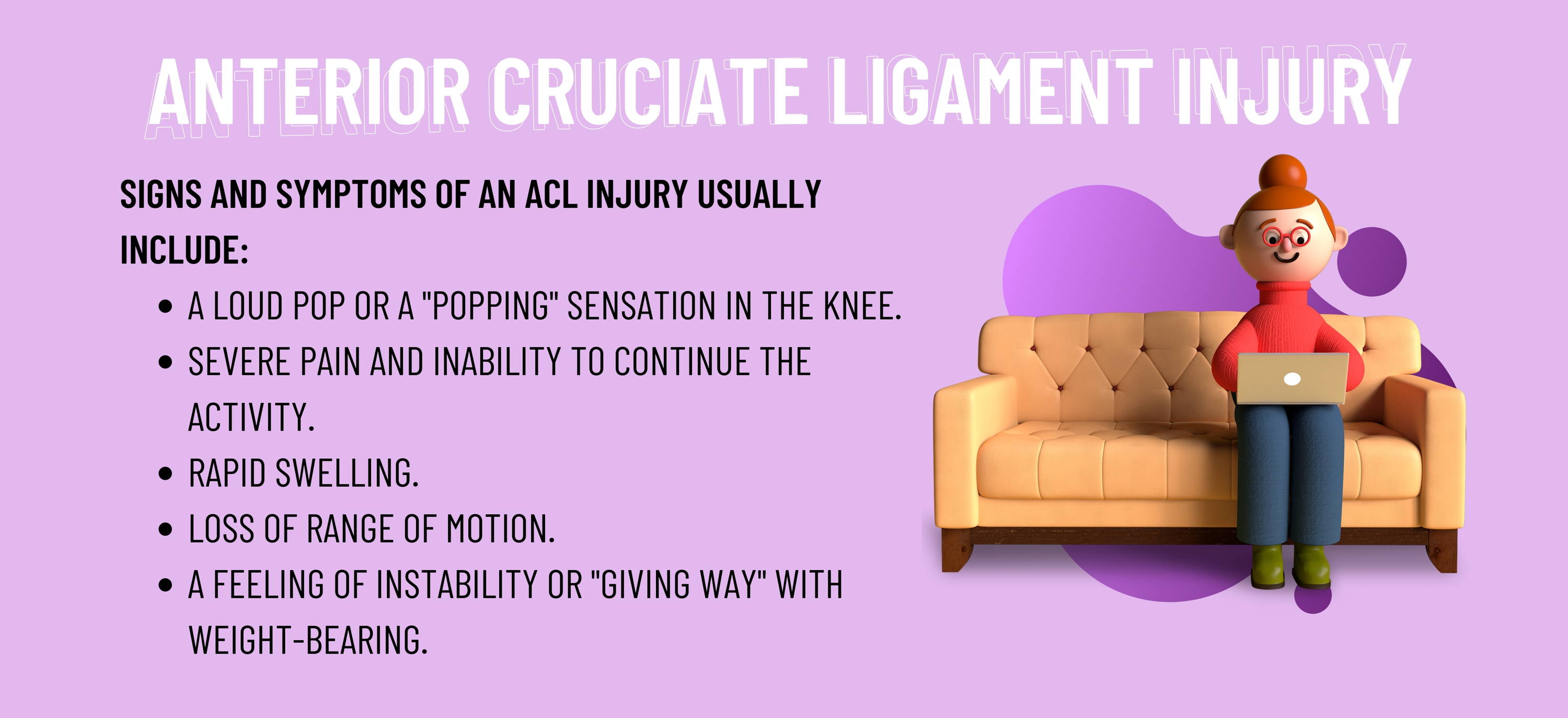
Anterior cruciate ligament injury
The anterior cruciate ligament (ACL) is one of the key joints that allow your knees to function properly. When this important stabilizing cord experiences damage, it can lead not only to an unstable knee but also pain in other areas such as the lower leg and foot when walking or running.
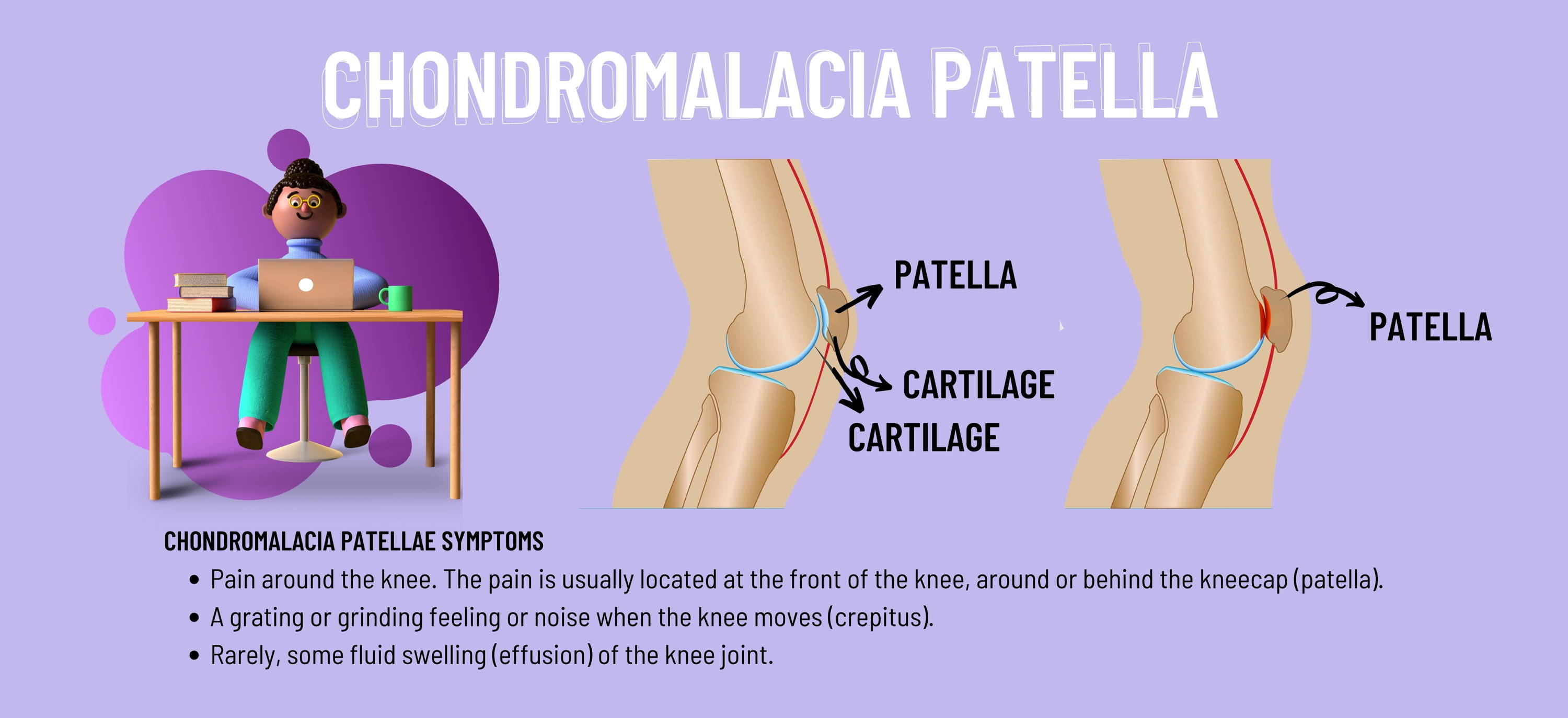
Chondromalacia patella
The condition of having painful knees, also known as chondromalacia patella, is known as patellar pain. Patellar pain is a dull throbbing ache that can develop from the rubbing of two bones together or simply discomfort if you bend it too much.

HOW BIG IS YOUR Q ANGLE, DETERMINE THE CHANCES OF MORE INJURY TO PREPARE WITH.
The Q angle is an indication of how wide your hips are. The higher this number, the steeper your thighs will be angled towards their knees while running and jogging; which in turn increases the risk for injury since there's more emphasis on one side at a time instead of balancing yourself like with two feet firmly planted down outside each leg, so you can control where gravity takes hold when going over uneven terrain or after impact based upon whether it was a high-speed collision, etc.
SYMPTOMS OF A Q-ANGLE RUNNING INJURY
A q-angle running injury is a type of stress fracture that can develop in the leg's Quadriceps Femoris muscle. The symptoms will vary according to where the break occurred but may include pain when walking upstairs, swelling around this region, limping on one or two legs due to an inability to keep weight off them while standing still as well decreased movement speed and agility which leads to slowing down because it becomes harder for you to get from point A (start)to B(finishing place).
CAUSES OF A Q-ANGLE RUNNING INJURY
A Q-angle running injury can occur when you stride with your left foot in front of the right. There are many causes, but some common ones include wearing improper shoes or not enough recovery time between runs and workouts on one side because they tire out faster than other muscles do for that particular body part (for example, hamstring).
TREATMENT FOR A Q-ANGLE RUNNING INJURY
If you suffer from a q-angle running injury, see your doctor for treatment. Do not do any of these exercises or activities while healing as this can lead to further damage!
Rest should be the main focus throughout recovery time so that soreness doesn't make it hard for one's self when returning into action again soon after they've been away on long term leave such as an injury like this comes along once in a while but with proper care iced compresses applied at home may help prevent swelling which will relieve discomfort caused by inflammation around joints where there are tears present due during active motion within certain sports.
Compression Therapy
Cold Compression Therapy is a great way to keep your injury from moving and allow the injured tissues in pain to heal. It can be used by athletes, military personnel, or anyone who has incurred an active muscle sprain without interfering with their normal life too much while they are healing and undergoing physical therapy because compression wears off gradually over time, so there isn't any sudden increase when it starts feeling better like other treatments do!
Are you suffering from a q-angle running injury?
The Q angle is the angle formed by the intersection of two lines, one drawn vertically from the ASIS to the floor and another drawn horizontally between the posterior superior iliac spine (PSIS) on each side. It’s important to note that this angle can be affected by many factors including but not limited to hip rotation, pelvic tilt, and leg length discrepancy. If you have a large Q-angle, it could lead to an increased risk for knee injuries such as patellofemoral pain syndrome or anterior cruciate ligament tears. To treat your q-angle running injury properly, you must first understand what it is and how it affects your body.
You should also make sure that all of your muscles are in balance with each other, so they don’t pull on any one part of your legs too much, which can cause further damage over time. This means strengthening weak muscles while stretching tight ones for them to heal properly without causing more harm than good. Once these steps are taken into consideration, then you will be able to recover fully from a q-angle running injury!
How do you correct the Q angle?
The condition of q-angle running injury is not something that can be repaired or treated with manipulation. Patients must rehabilitate their tight muscles, and strengthen the weaker ones for them to heal properly
Prevention techniques to avoid getting the condition in the first place MEE
The Q angle is a measurement of the angle between your thigh and lower leg. It's important for runners because if it's too high or too low, it can cause knee pain and even injuries like IT band syndrome, patellofemoral pain syndrome, iliotibial band syndrome, and anterior knee pain. If you're experiencing any of these issues when running, then read on! We'll tell you how to correct the Q angle so that you can get back out there doing what you love.
You don't have to stop running just because your knees hurt here are simple exercises can help reduce the Q angle so that your body is in better alignment with less chance of injuring itself. Get ready for more fun runs in no time!
MEET COCOONS
Cocoons is a versatile, comfortable, and simple-to-use option for your answer to injury. Our Cocoon will remove all of your aches and pains after your workout in a matter of seconds. It's available in nearly any size, and it uses cutting-edge compression technology to relieve every ounce of discomfort. We want you to be our next success story after successfully assisting more than 6,000 people around the world in feeling pleased and pain-free. Click here to see our Cocoon and learn more about it before purchasing!
